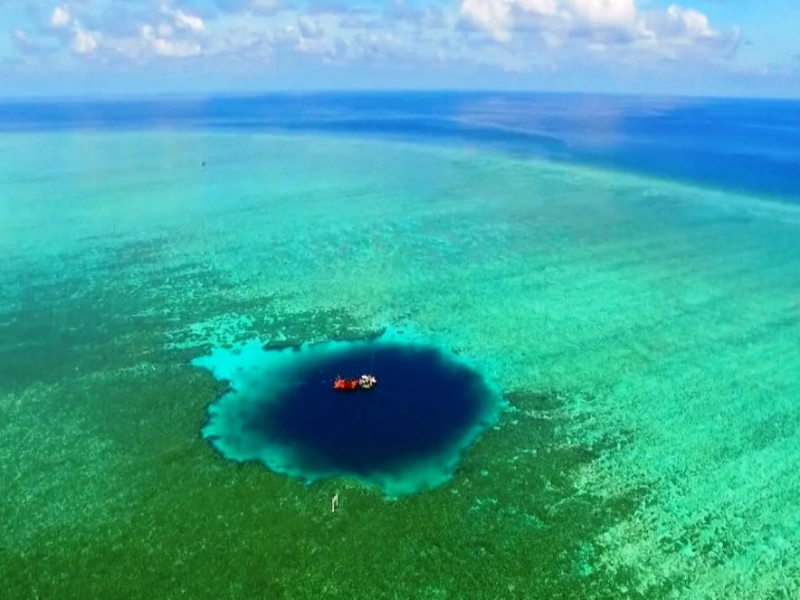Mexico's New Blue Hole Will Blow Your Mind
Advertisement
Dragon Hole (China)

Advertisement
Once regarded as the deepest blue hole in the world, the Dragon Hole in China—also known as Longdong—dropped to an astounding 987 feet (300 meters). Since its discovery, this natural beauty—which lies in the South China Sea close to the Paracel Islands—has enthralled the imagination of scientists, adventurers, and divers. Its tremendous depth challenged our knowledge of these unusual geological formations and the mechanisms generating them by setting a new benchmark for blue hole observations globally.
Basically, massive underwater sinkholes, or blue holes, are created over hundreds of years by intricate geological processes. These regions were above water during past ice ages, when sea levels were far lower. Rainwater progressively corroded the limestone, producing caves, because of its somewhat acidic nature resulting from its contact with carbon dioxide in the atmosphere. These flooded caverns created the blue holes we know today as sea levels increased. The great depth of the Dragon Hole points to a very long and intensive period of creation, most likely under the influence of special local geological circumstances.
The identification and later investigation of the Dragon Hole have given researchers great chances to investigate marine ecosystems, geological processes, and climate history. The great depth of the hole produces separate layers of water with different salinity, temperature, and oxygen concentrations. Different kinds of marine life can be supported by these strata, maybe including species that have evolved to fit the particular circumstances at different levels. Moreover, sediment samples from the bottom of the hole can provide information on past climate conditions, therefore acting as a natural record of environmental changes spanning thousands of years.
The Dragon Hole's depth notwithstanding, it stays enigmatic. Even with modern diving equipment, the great pressure and darkness in its lowest regions make extensive investigation difficult. This has spurred conjecture about what might live in its ultimate reaches: could there be hitherto unidentified organisms suited for this harsh environment? From the main shaft, are submerged cave systems branching off? These issues still fascinate scientists and inspire current research trips.
The importance of the Dragon Hole transcends only scientific ones. For China, it now represents a symbol of its rich natural legacy and a source of national pride. Declared a marine protected area, the Chinese government has acted to preserve this unusual creation. Understanding the interdependence of these natural systems, this status protects the hole itself as well as the nearby marine ecology. The protection initiatives seek to strike a balance between scientific inquiry, possible tourism growth, and conservation so that this natural beauty will endure for future generations to enjoy and study.
Our capacity to investigate and grasp the Dragon Hole keeps getting better as technology develops. High-end cameras and advanced sensors on remote-operated vehicles (ROVs) are enabling researchers to map the hole's inside with unprecedented accuracy. These investigations not only offer fresh information on the structure and occupants of the hole but also motivate more inquiries on the formation and ecological importance of blue holes all around. The Dragon Hole reminds us of the great secrets still to be unearthed under the waters and is evidence of the beauties still existing in our seas.
Advertisement
You May Like

